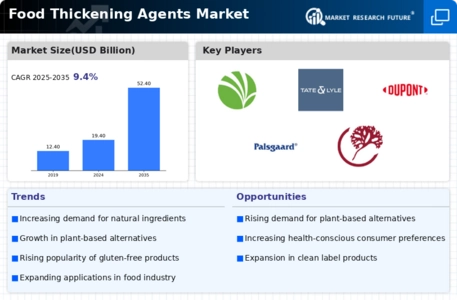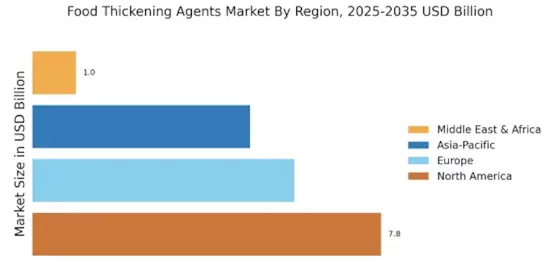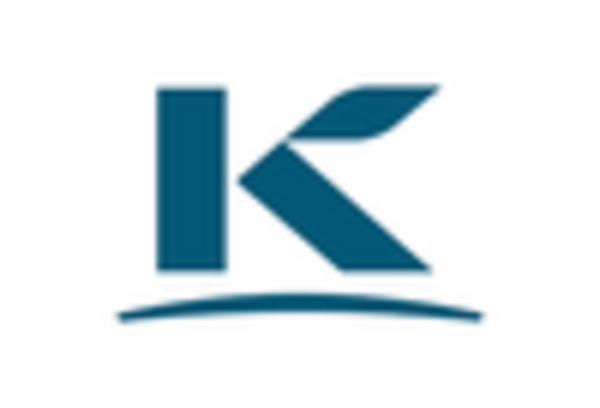Growth of the Food Service Industry
The Food Thickening Agents Market is also benefiting from the growth of the food service industry, which encompasses restaurants, catering services, and institutional food providers. As dining out becomes more prevalent, the demand for high-quality food products that require thickening agents is on the rise. The food service sector is projected to grow at a steady pace, driven by changing consumer lifestyles and preferences for diverse culinary experiences. This growth presents opportunities for food manufacturers to supply thickening agents that enhance the texture and flavor of dishes served in restaurants and cafes. Consequently, the food thickening agents market is likely to see increased demand as food service establishments seek to improve their offerings and meet customer expectations.
Expansion of the Food and Beverage Sector
The Food Thickening Agents Market is significantly influenced by the expansion of the food and beverage sector. As the global population continues to grow, the demand for processed and packaged foods is on the rise. This trend is particularly evident in emerging markets, where urbanization and changing lifestyles are driving the consumption of convenience foods. The food and beverage sector is projected to reach a valuation of over USD 5 trillion by 2026, which is likely to create substantial opportunities for food thickening agents. These agents play a crucial role in enhancing the texture and stability of various food products, thereby supporting the industry's growth. Consequently, manufacturers are increasingly incorporating thickening agents into their formulations to cater to the evolving preferences of consumers.
Increasing Demand for Clean Label Products
The Food Thickening Agents Market is experiencing a notable shift towards clean label products, driven by consumer preferences for transparency and natural ingredients. As consumers become more health-conscious, they increasingly seek products that are free from artificial additives and preservatives. This trend is reflected in the rising sales of food products that utilize natural thickening agents such as guar gum and xanthan gum. According to industry reports, the clean label segment is projected to grow at a compound annual growth rate of approximately 7% over the next five years. This growth is likely to propel the demand for food thickening agents that align with clean label standards, thereby influencing manufacturers to innovate and reformulate their products to meet these evolving consumer expectations.
Technological Innovations in Food Processing
The Food Thickening Agents Market is being shaped by technological innovations in food processing techniques. Advances in food technology have enabled manufacturers to develop new and improved thickening agents that enhance product quality and shelf life. For instance, the introduction of enzyme-modified starches has revolutionized the way thickening agents are utilized in food formulations. These innovations not only improve the sensory attributes of food products but also cater to the increasing demand for clean label and natural ingredients. As food processing technologies continue to evolve, the market for food thickening agents is likely to expand, with manufacturers investing in research and development to create more efficient and effective thickening solutions.
Rising Health Awareness and Dietary Preferences
The Food Thickening Agents Market is witnessing a surge in demand due to rising health awareness and changing dietary preferences among consumers. With an increasing focus on health and wellness, individuals are more inclined to choose products that offer nutritional benefits. This shift is particularly evident in the growing popularity of gluten-free and low-calorie food options, which often require effective thickening agents to maintain desirable textures. Market data indicates that the gluten-free food segment is expected to grow at a CAGR of around 9% over the next few years. As a result, food manufacturers are actively seeking innovative thickening solutions that align with these health trends, thereby driving the demand for various food thickening agents.


















Leave a Comment